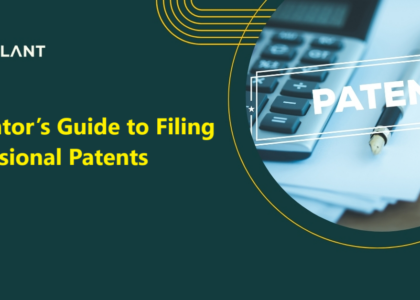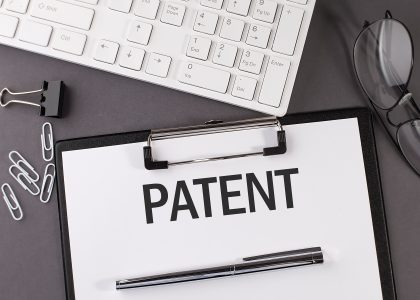

Benefits of Filing a Provisional Patent Application and How to File (2022)
A provisional patent application is a legal document that permits an inventor to file a patent application without submitting a full patent application. Provisional patent applications offer the filer a year to see if their idea will be profitable enough to warrant obtaining a patent on their intellectual property. A patent can restrict an invention’s size, design, or impression to the creator alone.
How to File a Provisional Patent Application?
A provisional patent application is an important initial step in safeguarding an inventor’s intellectual property. This is significant because, without a patent, some product characteristics, such as its size, design, or expression, are open to anyone to use and benefit from. Intellectual property attorneys may help with provisional patent applications and are familiar with filing.
A simple six-step approach is the simplest way to file a provisional patent application:
Step One: Research Your Invention
Verifying the exclusivity of your innovation is the first step in filing a provisional patent application. A provisional patent application may be a waste of time if someone else has previously developed an identical concept or if the idea is too apparent. Before moving on, be sure you perform your study to ensure that your idea is novel and distinctive.
A patent search is an excellent technique to ensure that your innovation meets provisional patent application standards. This may be done through the USPTO or the World Intellectual Property Organization (WIPO) websites. You can do a claims patent search using several keywords to validate your idea accurately.
Step Two: Gather Patent Information
A provisional patent application should contain a lot of product-specific information regarding the product you want to patent. To prepare for the following phases, you’ll need to gather as much information on your product as possible. Here are some bits of data you’ll need to gather and organise:
- Specifications
- Drawings
- Abstract
- Invention status
- Intended use
Step Three: Write a Coversheet
Any provisional patent application must include a cover sheet. Each application must contain a cover sheet that includes the following information:
- Names of all involved inventors
- Inventors’ addresses
- Name of invention
- Name and credentials for attorney or agent and any applicable docket numbers
- Correspondence address
- If a government agency has an interest in an invention, that must be disclosed here
Step Four: Prepare a Product Description
Another crucial component of a provisional patent application is a detailed product description. Include details such as the product’s size in your specifications. This application section should also include any shop drawings, abstracts, or schematics. Ensure all relevant product data in the product description, which should be as precise and explicit as possible.
Step Five: Review and Edit
Review your application carefully, paying specific attention to any spelling or grammatical problems. This is also a good opportunity to go through any notes or outlines you used to construct your application and double-check that the provisional patent application has all your information about your product.
Step Six: Submit Application
When submitting a provisional patent application to the USPTO, make sure you have the resources to file a formal patent application within 12 months after the provisional application’s submission. It’s important to remember that provisional patent applications cannot be renewed or extended; thus, timing is crucial. You should anticipate paying anything from $65 to $280 in filing costs when applying.
After completing your application, you may start selling, marketing, and even further developing your idea right away. Applications can be submitted digitally via facsimile or email, in person, or by mail.
Costs of Provisional Patent Applications
Inventors choose provisional patent applications because they are substantially less expensive than ordinary ones. Patent attorneys can help make the process move more smoothly, but they aren’t necessarily required to write a successful application. Many innovators choose to generate their own applications to save money on marketing, product development, and even official patent applications and legal expenses.
When developing a provisional patent application, applicants should budget for the following expenses:
- Filing fees
- Lawyer fees (if applicable)
- Time spent doing research
Benefits of Provisional Patent Applications
Inventors gain from provisional patent applications in particular. They are valuable because they prevent inventors’ work from being stolen by others. They also prepare the path for a legally binding patent to be filed within 12 months of the provisional filing date. In the end, provisional patent applications were designed particularly for the inventors’ benefit.
The following are some of the most significant advantages of submitting a provisional patent application:
- Product Protection: Applicants can prevent themselves from losing money if another manufacturer or innovator tries to develop a comparable product by filing a provisional patent application. When it comes to promoting a new product, many people believe that getting to market first is crucial; hence provisional patent filings are a terrific alternative.
- Reduced Cost: Compared to typical patent applications, provisional patent applications are well-known for their inexpensive cost. They’re easy enough to put together without the help of a lawyer, so there’s no need to spend money on them. The filing fees are likewise reasonable, ranging from $65 to $280 per document.
- Patent Pending: The opportunity to use the phrase “patent-pending” for a product is perhaps the most sought-after benefit of filing a provisional patent application. Because a patent backs up the validity of a product branded with this phrase, it is more likely to perform well in the market.
- More time to develop: Because inventors have twelve months from filing a provisional patent application to filing a nonprovisional patent application, they have more time to develop their product before submitting it for a regular patent. This time can be spent on marketing, fundraising, or even more in-depth product development.
- First to Market: When a new product is introduced, the first item or brand to join the market generally performs best in profit and popularity. Inventors that file for a provisional patent are securing their right to be the first to market their product. This increases the likelihood of their items being successful and lucrative.
- Investors: A well-written provisional patent application contains all the information you want for a new product. This may make investors feel more comfortable putting their money into new businesses.
Contact an experienced and trusted patent attorney before filing a patent application or developing an entire intellectual property strategy to get a patent soon. Still, a provisional patent application might be a wonderful first step toward securing your idea at a low cost.








